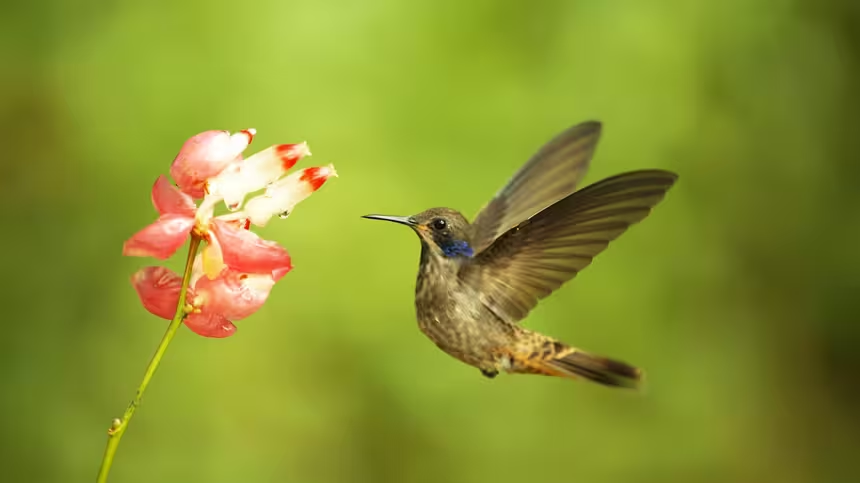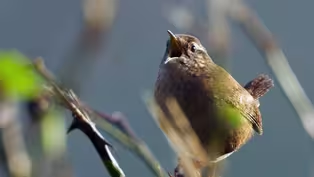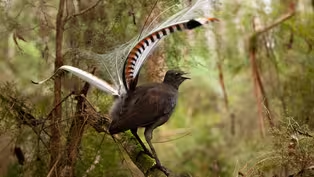
Young David Attenborough Records First Lemur Sounds
Clip: Season 41 Episode 13 | 2m 34sVideo has Closed Captions
In 1960, David Attenborough captured the first-ever audio of Madagascar’s largest lemur.
In 1960, a young David Attenborough helped capture the first-ever audio of Madagascar’s largest lemur, the indri. Using a battery-powered portable tape recorder, he played the sounds back to the lemurs and was rewarded with responses, which were thought to be a “keep out” signal over territory.
Problems playing video? | Closed Captioning Feedback
Problems playing video? | Closed Captioning Feedback
Major support for NATURE is provided by The Arnhold Family in memory of Henry and Clarisse Arnhold, Sue and Edgar Wachenheim III, The Fairweather Foundation, Charles Rosenblum, Kathy Chiao and...

Young David Attenborough Records First Lemur Sounds
Clip: Season 41 Episode 13 | 2m 34sVideo has Closed Captions
In 1960, a young David Attenborough helped capture the first-ever audio of Madagascar’s largest lemur, the indri. Using a battery-powered portable tape recorder, he played the sounds back to the lemurs and was rewarded with responses, which were thought to be a “keep out” signal over territory.
Problems playing video? | Closed Captioning Feedback
How to Watch Nature
Nature is available to stream on pbs.org and the free PBS App, available on iPhone, Apple TV, Android TV, Android smartphones, Amazon Fire TV, Amazon Fire Tablet, Roku, Samsung Smart TV, and Vizio.
Buy Now

American Spring LIVE
Spring is coming to you LIVE on PBS! Find out how NATURE is celebrating the season of rebirth and how you can get involved as a citizen scientist!Providing Support for PBS.org
Learn Moreabout PBS online sponsorship(indris calling) - This noise was no bird call.
I had never heard anything like it before.
It must be the voice of the indris.
(indris calling) Using my new equipment, I made the first ever audio recording of the indri.
(indris calling) But could we also capture them on camera as well?
The song was so loud that it seemed impossible that the animals could be more than 20 or 30 yards away.
But where were they?
(indris calling) Until now, no one had even managed to photograph a living one, let alone film it.
Infuriatingly, the bush was so thick that I could see no sign of them whatever.
(indris calling) So the question was how could we get close enough to get a clear view of them without frightening them?
Well, I thought, what about doing it the other way round and trying to persuade them to get closer to us by playing their calls?
(indris calling) And they did exactly what I hoped they would do.
(indris calling) They called in return, came down close to us, stared at us, still calling.
(indris calling) I was thrilled.
We had recorded their song and filmed them singing.
But why had this trick worked?
(indris calling) Well, because they thought that the song I was playing meant a competitor was close by, and their response was to sing.
(indris calling) And this suggested one thing.
There are such things as battle songs.
(indris calling) Songs that say "Get out, this is my territory."
(indris calling)
Footage Proves Female Songbirds Can Sing
Video has Closed Captions
Clip: S41 Ep13 | 2m 33s | It was once thought that only male songbirds were capable of song. (2m 33s)
Male Lyrebird Manipulates Female Into Mating
Video has Closed Captions
Clip: S41 Ep13 | 2m 42s | Up to now, scientists had thought that song was an honest signal from the male. (2m 42s)
Preview of Attenborough's Wonder of Song
Video has Closed Captions
Preview: S41 Ep13 | 30s | David Attenborough presents seven of the most remarkable animal songs found in nature. (30s)
Providing Support for PBS.org
Learn Moreabout PBS online sponsorship
- Science and Nature

Explore scientific discoveries on television's most acclaimed science documentary series.













Support for PBS provided by:
Major support for NATURE is provided by The Arnhold Family in memory of Henry and Clarisse Arnhold, Sue and Edgar Wachenheim III, The Fairweather Foundation, Charles Rosenblum, Kathy Chiao and...



